Can I use protein powder in the paleo diet? And what kind of paleo protein powder should I use? In this post, I try to answer these two common questions and cover the pros and cons of different types of protein powders.
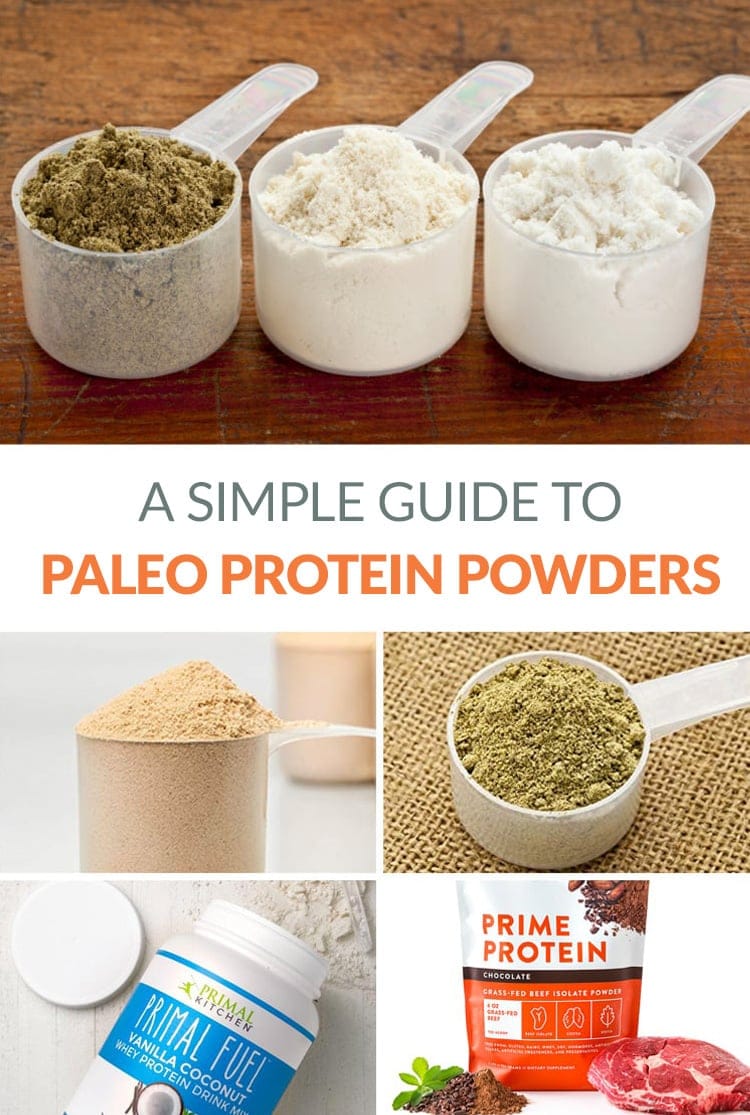
Paleo Diet & Protein Powder
The paleo diet is all about eating nutrient-dense, real food and avoiding chemicals, additives, preservatives, refined sugar, hydrogenated oils and the list goes on.
When it comes to protein powder, we are talking about fairly processed food. To extract protein from the real foods that contain them, the manufacturers have to go through a fair amount of processing.
That protein is then combined with other ingredients to make a palatable powder with a decent shelf life. The quality of the protein powder and whether you should include it in your diet really depends on the source of the protein and how clean those extra ingredients are.
The most important thing to remember is that protein powder should not be a replacement for real food. I always recommend getting as much protein from foods as possible: eggs, fish and seafood, chicken, red meat, some nuts and seeds, and even dairy for those who can tolerate it.
For vegetarian-friendly but not specifically paleo-compliant foods you might also look at things like green peas, safer grains like white rice and pseudo-grains like buckwheat, quinoa, and amaranth (soaked, sprouted and fermented if possible to reduce the number of antinutrients).
However, as a way to supplement your body with extra protein or when you need a quick and convenient protein-rich meal, having good-quality paleo protein powder can be very useful.
When Protein Powder Is Useful
If you need extra protein for training and building muscles, recovering from an illness or post-surgery, during pregnancy or whatever other health reasons, adding protein powder to smoothies, shakes, bliss balls, paleo bars, muffins or pancakes is a great way to boost this macronutrient.
Paleo protein powders are also useful if you’re too busy to prepare a protein-rich meal or you haven’t stocked up on protein-rich foods; on those ‘meat-free’ or ‘egg-free’ mornings when you still want to meet your protein needs; or, if you’re having issues chewing or swallowing food (wisdom teeth anyone?). That’s when adding a protein shake or a smoothie to your day is a great option.
How To Choose The Best Paleo Protein Powder
There are lots of different protein powders on the market: whey, casein, egg white, soy, hemp, pea, and brown rice. Some are more paleo-friendly than others, depending on your own diet, health, sensitivities and wallet. However, the source of the protein in the powder is often not the ingredient you should be concerned with the most.
For example, here are the ingredients in a generic whey protein powder in cookies and cream flavour.
INGREDIENTS: Protein Blend (Whey (Milk) Protein Concentrate (WPC80), Hydrolysed Whey (Milk) Protein, Whey(Milk) Protein Isolate), Cocoa Powder (Sulphites), Emulsifiers (Soya Lecithin, Acacia Gum), Bulking Agent (Xanthan Gum), Maltodextrin, Sweetener (Sucralose), Cream Flavouring, Triacetin, Anti-Caking Agent (Silicon Dioxide), Sucrose, Vegetable Oil, Biscuit Flavouring, Lactoperoxidase(Milk), Vitamin C (as Sodium Ascorbate), Vitamin E (as dl-Alpha Tocopherol), Colour (Beta Carotene). For Allergens – See ingredients in bold.
When choosing a protein powder, make sure to read the labels to make sure that it contains as natural ingredients as possible, has no added sugar (safer sweeteners like stevia are okay) and no weird chemicals or additives, and do some research into anything you’re not sure about.
Don’t hesitate to email the company to find out more about the ingredients or the processes involved in manufacturing the product. You might also consider the sources of the ingredients (e.g. organic, GMO, fair-trade, local) and even how sustainable the packaging is. Typically, I choose mildly flavoured or unflavoured protein powders because I find them more versatile.
Paleo Protein Powder Options
Here is a quick breakdown of protein powders and how they stack up against each other.
Egg White Protein Powder
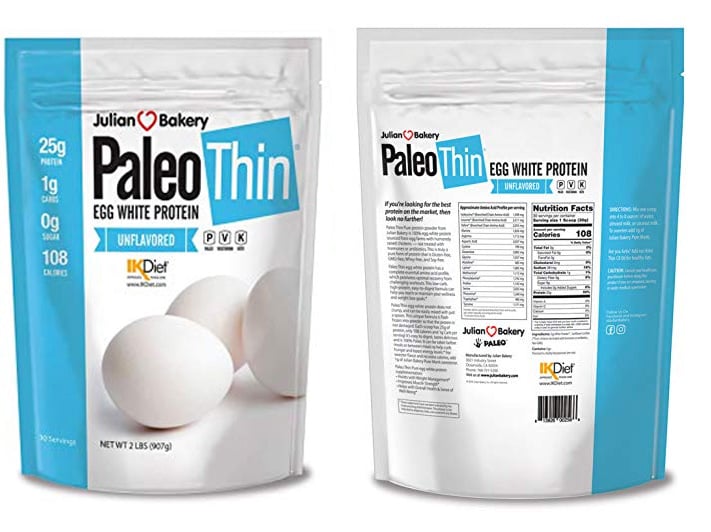
Egg white protein is a great source of protein with all amino acids and it has been around even before whey and casein became popular in the ’90s. It’s naturally lactose-free so it’s suitable for those avoiding dairy.
It’s highly bioavailable, low-carb and contains about 24 grams of protein per 30-gram scoop.
Look for egg white protein from free-range eggs and avoid whole egg protein to avoid any oxidised yolk cholesterol. Paleo-friendly but avoid if following an autoimmune paleo or are sensitive to eggs.
Try these brands of egg protein powder:
Paleo Thin® Protein Egg White Powder
Pure Egg White Protein Powder
Highly rated: Paleo Pro Protein Powder (this a blend with beef isolate protein)
Beef Protein Isolate
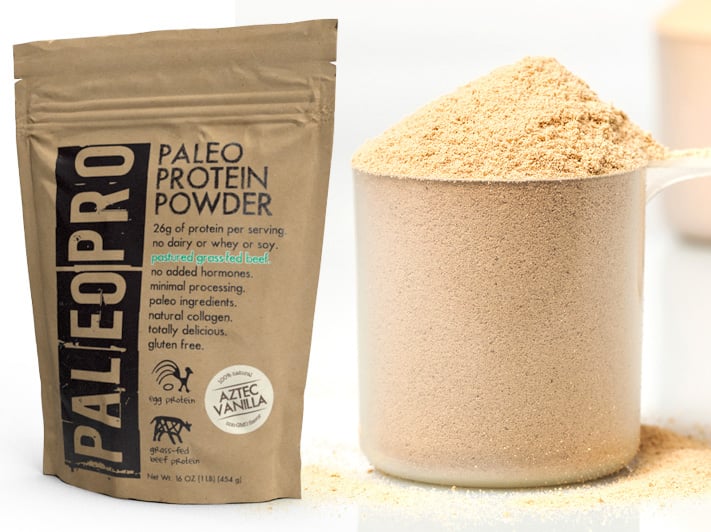
Beef protein is a pure animal protein derivative which means inherently, it’s very much paleo-friendly.
The process begins by boiling down beef flesh to extract the most concentrated amounts of each essential amino acid for delivery. After that, all the macronutrients are stripped away from the protein, removing both fat and carbohydrates for a mixture that is approximately 98% protein.
It’s comparable to whey (one of the most potent options) with high amounts of amino acids such as alanine, arginine, glutamic acid, glycine, and proline. You will get 24 grams of protein in a 30-gram scoop.
It can be a little tough to digest. It takes a while to run through the system, which can cause gastrointestinal distress in those making the switch or using it for the first time. This is another reason why whey (discussed further below) is often considered superior because it digests rather quickly. However, beef protein isolate digests much like its solid food sister would – beef steak.
Try Vanilla Beef Paleo Protein Powder or Paleo Pro Protein Powder (this a blend with egg white protein and is highly rated).
Collagen Peptides (Hydrolyzed Beef Protein Isolate)
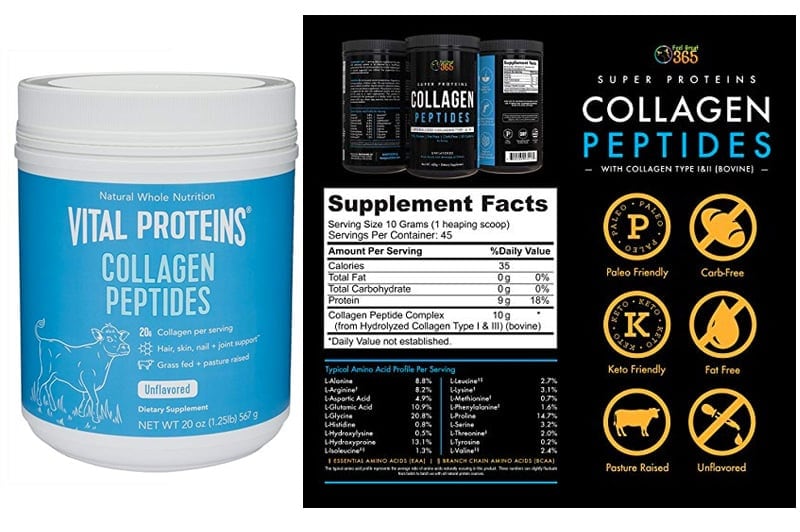
Collagen peptides are beef protein isolate but hydrolized meaning it’s the collagen, gelatin and leftover scraps. While this product isn’t necessarily considered a protein powder, it packs in some of the same benefits as the ones listed above.
For individuals who follow the autoimmune protocol or need a truly Whole30 protein shake ingredient, this is arguably the best and most natural option for a protein supplement on the market.
While high in the same amino acids, they aren’t as easily digested, contain mostly non-essential amino acids (the ones you make on your own), and no branch chain amino acids (BCAA) which are known to aid in building muscle.
However, it’s a good nutritional supplement for many reasons beyond just protein. Collagen can help to balance our hormones. Many people who follow a paleo diet – women in particular – hope to manage hormones using real food as a tool. Collagen can help to support healthy thyroid function and reduce cortisol levels. Essentially, it’s great for weight loss or management and keeping stress levels low.
Furthermore, collagen is what the bones are made of, so consider this product food for the bones. It’s a great addition to anyone’s diet, including the athlete’s diet whose bones need a little extra love.
With around 10 grams of protein per scoop, this powder does have what it takes to provide you with energy and satiety which are two of the main goals when we add a protein supplement to the diet. It’s especially helpful for keeping tissues and bones strong as we age, and our production of those non-essential amino acids decrease.
Some brands to look out for:
VITAL Proteins Collagen Peptides (Unflavoured)
Hydrolyzed Collagen Peptides Powder by Feel Great 360
Primal Kitchen Grass-fed Collagen Peptide Drink Mix
Whey Protein Powder
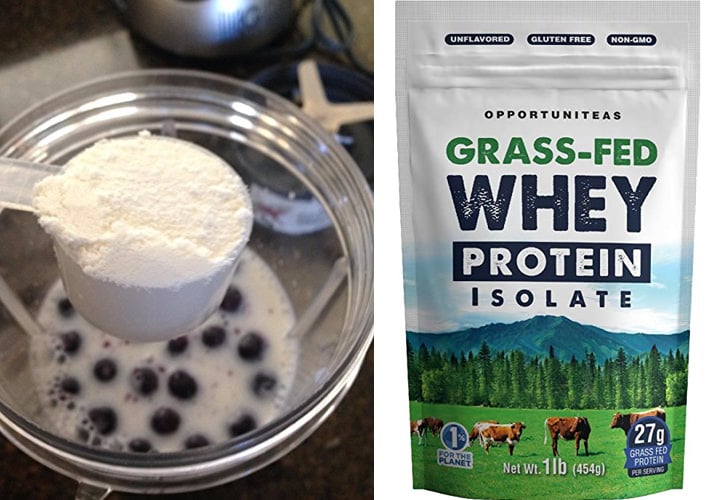
Whey protein is a mixture of globular proteins isolated from whey, the liquid created as a by-product of cheesemaking. After the milk has been curdled and strained, you’re left with a semi-white, watery liquid that contains a bunch of proteins that contain all essential amino acids.
Because whey contains traces of lactose (sugar in the milk), it can be problematic for people who are intolerant to it. Casein (another protein in the milk) that some people are sensitive to is almost entirely absent in whey as casein is what whey separates from during the curdling process of the cheesemaking.
Whey protein can be a concentrate (less processed but with less protein percentage), an isolate (higher protein percentage and fewer traces of dairy), or a more priced hydrolysate (pre-digested and more easily absorbed).
Is Whey Protein Paleo?
Because whey is derived from dairy, it’s not technically paleo but it’s a good source of protein for those who can tolerate small amounts of lactose. Choose whey isolate if you can afford it as it’s even lower in lactose elements, and if not, go for the concentrate.
Should you buy grass-fed whey? Yes, if possible but if budget is an issue, I’d save the money to buy grass-fed meat.
Here are some brands that I like (from Amazon but you can search for similar products in your countries). Most of these have 1 to 3 ingredients, are cold-processed, no added sugar and are unflavoured.
Raw Grass-Fed Whey – Happy Healthy Cows
Grass-Fed Whey Isolate Protein Powder by Opportunities
Isopure Zero Carb Protein Powder
Casein Protein
Casein is the other protein derived from milk. It’s absorbed slower than whey, supplying amino acids to the muscle over a prolonged period of time. It’s a popular protein with body-builders, who often take it before bed, but it’s even more problematic than whey for those with dairy allergies or autoimmune conditions.
Some believe that combining both casein and whey is the optimal way to consume protein, which is why milk (contains both) is so popular in body-building. Not as paleo-friendly as whey in my opinion.
Plant-Based Protein Powders
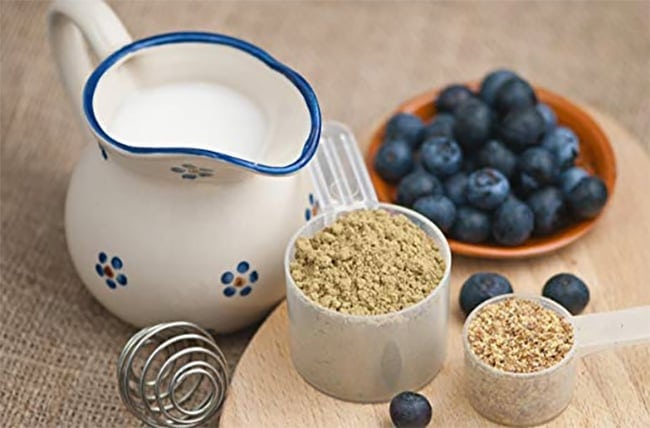
Typically, plant-based protein powders are slightly lower in protein than the animal-derived sources and are not as efficiently absorbed by the body.
Individual plant-derived protein powders might not contain all essential amino acids (except for hemp seed), and that’s why you will often see them combined in a powder blend. However, they can be a great alternative for vegetarians and those who can’t tolerate dairy or eggs.
You will typically find protein powders derived from pea, rice, hemp or quinoa on the market. These are all forms of legumes, grains, seeds and pseudo-grains. While the paleo diet shuns the consumption of most grains and legumes because of the toxic antinutrients they contain (phytates, lectins, saponins, and trypsin inhibitors), there are a few caveats.
Legumes from edible pods like green peas and green beans are generally allowed on a paleo diet because they contain lower and less toxic antinutrients than other grains or mature legumes. Any present toxins are also less stable in young pods and are typically deactivated or negated during the cooking process.
Soaking and sprouting legumes and grains before cooking also helps to reduce the amounts of above-mentioned antinutrients and increases the bioavailability of beneficial nutrients. Fermentation is even more effective in deactivating toxins and improving the digestibility of these foods. Read this article on Mark’s Daily Apple about soaking, sprouting and fermenting grains and legumes.
Hemp protein powder is the most paleo-friendly out of the plant-based options and also the one with the most complete amino acid profile. Otherwise, go for protein powders from grains and legumes that have been soaked, sprouted or fermented.
Try Nutiva Organic, Cold-Processed Hemp Protein or ALOHA Organic Plant-Based Protein Powder.
A Quick Guide To Plant-Based Protein Sources
- Pea protein is usually isolated protein from the golden pea husks.
- Hemp protein is derived from hemp seeds (don’t worry, this is not the variety that will get you high) and is generally lower in protein than animal-based powder. It is high in fibre and contains all essential amino acids and a good ratio of Omega 3 to 6, making it a pretty good choice of vegetarians.
- Rice protein powder is an isolated protein from the brown rice grain.
- Soy protein – computer says no! Avoid it if you can.
Different Ways To Use Protein Powder
Now, that you have a better idea of why and how to choose a protein powder, here are some ways to use it.
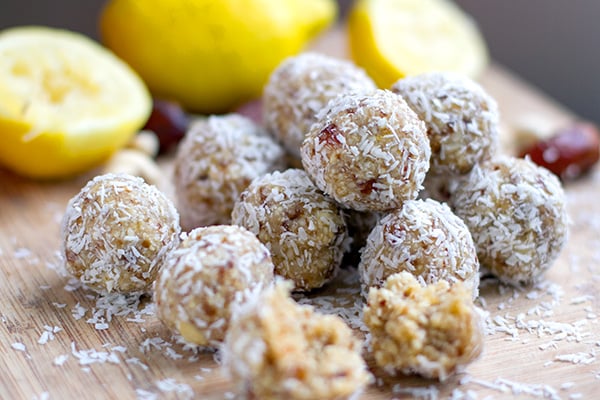
- Shakes and smoothies – add coconut milk, coconut water, regular water, almond milk, fresh and frozen fruit and berries, cacao powder, nut butter, greens, superfood powders. Find some smoothies here.
- Bliss balls or energy balls – add the powder to nuts, seeds, dried fruit, and coconut oil and process in a food processor, mould into bite-size balls and keep in an air-tight container in the fridge for a quick post-workout snack or a lunch box addition. Check out these 15+ healthy bliss ball recipes.
- Protein bars and muesli slices – check out our recipe for a breaky protein muesli bar for inspiration (link to be added). Get inspired with these homemade paleo bars.
- Mix in the cakes and muffins.
- Make protein pancakes such as these 3-Ingredient Protein Pancakes from PaleOMG
- Add to ice-cream and popsicles.
- Add to chia pudding, paleo ‘oatmeal’ or ‘porridge’.
- Make a protein-rich hot chocolate – yum!
Disclosure: This post contains affiliate links. I receive a small amount of compensation when you purchase from my links, which I’ll totally blow on coffees and paleo treats.
References
- Whey Isolate Concentrate – Mark’s Daily Apple
- Soaked, sprouted and fermented Grains – Mark’s Daily Apple
- Millet on the paleo diet – The Paleo Diet
- Why Golden Pea Protein is Great For Paleo Diets – Nuzest
- Is it Primal? 10 Foods Scrutinised – Mark’s Daily Apple
- Goitrogens – Why You Don’t Need To Avoid Them – Autoimmune Paleo
- Casein – Wikipedia
- Pros and Cons of Egg Protein Powder – Super Human Coach
- Hemp Permitted On Paleo Diet – The Paleo Diet
- Is Hemp Primal? – Mark’s Daily Apple
- FAQs – Is Protein Powder Ok On A Paleo Diet? – Balanced Bites
- Paleo Protein Powders – Paleo Leap
- Are Lectins Bad? – The Paleo Mom
- Protein Supplement Nutrition Guide – The Greatist
- Fallon S, ‘Nourishing Traditions: The Cookbook That Challenges Politically Correct Nutrition and the Diet Dictocrats’, New Trends Publishing Inc, US; 2Rev Ed edition (1 Sept. 2009)




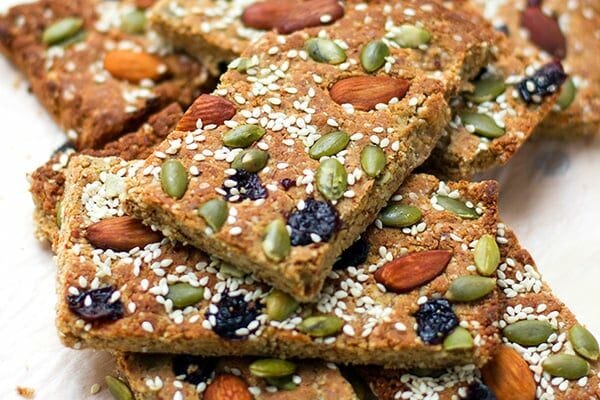
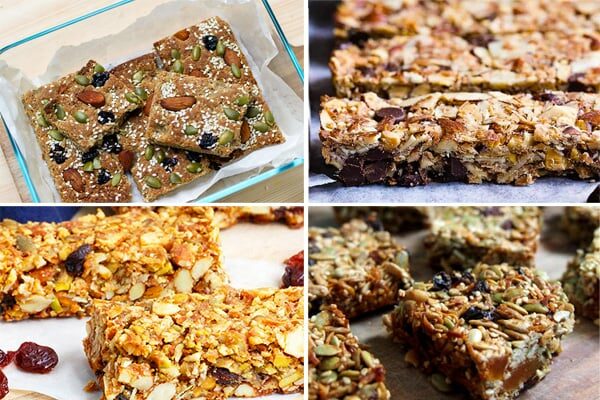
I’ve been curious about the collagen peptide powder. I don’t think its a complete protein, but do you think it could substitute in a pinch for protein?
Hmmm, I don’t much about this one. Will have to research!
When picking a protein powder it is also good to check that their claims match reality. A good starting point is something like https://labdoor.com/rankings/protein which will also let you sort by some simple requirements no sugar, no diary etc.
I know prorein powders are good but I prefer clean healthy food. My system feels dirty with anything processed
This is really well researched and informative. I’ve been following a really lax paleo-ish diet but I’m trying to be better about it and your site has been really helpful
What are your thoughts on gelatin and collegen powders?
I think they are great. They are definitely more readily available now than when we did this article so it’s time to update it with some more options, I think.
I truly love these Paleo Protein Powders, An obligation of appreciation is all together for
sharing a great deal of information.